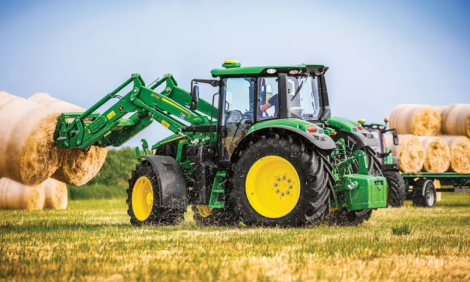



Manure on the move
ONTARIO - New transfer system improves pig performance while reducing odours. The resulting gases from decomposing pig manure can be fatal to both animals and humans. Now University of Guelph researchers are studying an innovative manure transfer method that could provide a breath of fresh air for pigs and producers alike.
Research engineer Ron Fleming of Ridgetown College is working on a daily-removal, flat conveyor belt system that separates solid manure from urine. Tests have shown it reduces barn odours, gives farmers more options for spreading or composting manure, and even improves pig performance and well-being, which means a better bottom line for producers.
"Removing manure daily can noticeably improve pig welfare, growth rate and weight gain, which allows pigs to leave for market earlier," says Fleming. "These benefits would quickly compensate the farmer for installing the belt system."
Current manure-handling systems are characterized by pens that usually have completely or partially slatted concrete floors, allowing manure to drop into a pit, where it's stored and decomposed by bacteria. The problem with these systems is that manure is stored in the barn for a long time - from several months to a year - and the bacteria produce large amounts of hydrogen sulphide and other gases and compounds that contribute to foul odours in the feeder barn.
Fleming wants to remove manure every day, before gas production begins. A six-foot-wide plastic belt located under the slots in the pen collects the manure as it drops through the floor. The belt is tilted slightly so that urine will run off into a gutter. The liquid is stored in an outdoor tank and eventually applied to the soil as fertilizer, while solid manure stays on the belt and is removed once or twice daily. Farmers can then decide whether to compost it or store it as solid manure and use it as fertilizer.
When the benefits to animal and operator health are factored in, the system should be competitive or superior to current manure storage systems, says Fleming.
This research is funded by Ontario Pork.
Source: By Heather Scott, Ontario Pork - September 2004








